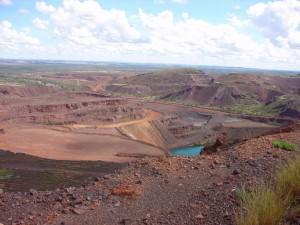 Despite being the world’s largest exporter of rare earth metals, China just released its first-ever report on the rare earth mining industry about a week ago. Titled, “Situation and Policies of China’s Rare Earth Industry,” the white paper recognizes the widespread pollution caused by excessive and careless mining. The Chinese government also acknowledges the prevalence of illegal mines and need for greater environmental compliance (New York Times).
Despite being the world’s largest exporter of rare earth metals, China just released its first-ever report on the rare earth mining industry about a week ago. Titled, “Situation and Policies of China’s Rare Earth Industry,” the white paper recognizes the widespread pollution caused by excessive and careless mining. The Chinese government also acknowledges the prevalence of illegal mines and need for greater environmental compliance (New York Times).
From smartphones to hybrid powertrains, rare earth metals are critical components in many high-tech products. The U.S. estimates that China holds half the world’s rare earth metals reserves, though the Chinese government puts the number at 23 percent. Given its share of reserves, it is somewhat surprising that China supplies the world with 90 percent of its rare earth metals. Chinese mining companies are able to sell rare earth metals at competitive prices despite the country’s harsh export quotas and tariffs. (The U.S., European Union and Japan recently challenged China’s restrictions in a formal complaint to the World Trade Organization.)
Even with heavy restrictions on exports, China is suffering the consequences of irresponsible mining. As quoted in the NYT, China’s report states, “Excessive rare earth mining has resulted in landslides, clogged rivers, [and ] environmental pollution emergencies,” harming the wellbeing of the public and the environment. The paper also says that inefficient mining practices have wasted valuable resources and created “extensive emissions of radioactive residues, heavy metals and other contaminants.”
While the report recognizes damage caused by rare earth mining, it appears that significant future policy changes will be saved for later. The government has forced several mines to shut down or install expensive environmental protections, but Dudley Kingsnorth, a professor cited by the NYT, says the white paper is “really only a more formal statement of their current actions” to regulate the industry.
Image

